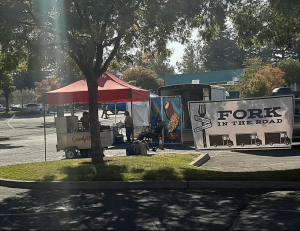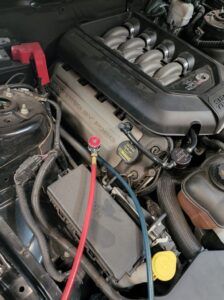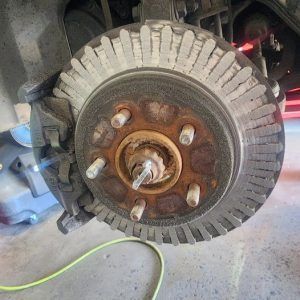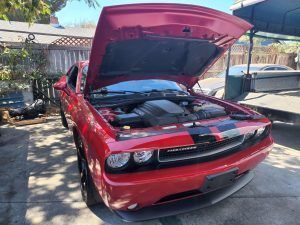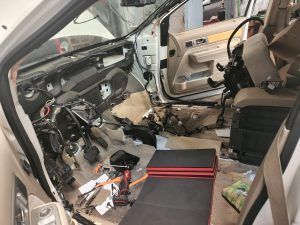Watch For The Red Flags: Identifying Common Radiator Issues
Are you experiencing issues with your radiator? It’s crucial to be aware of the red flags that indicate common radiator problems. Identifying these issues early on can save you from costly repairs and prevent your engine from overheating.
In this article, we will guide you through the key signs to watch out for when it comes to your radiator. First, an overheating engine can be a clear indication of radiator trouble. We’ll explain the possible causes and what steps to take to address the problem.
Additionally, coolant leaks can lead to serious engine damage if left unattended. We’ll show you how to detect and fix these leaks before they escalate.
Rust or corrosion can also plague your radiator, compromising its performance. We’ll provide tips on how to spot these issues and prevent further damage.
Furthermore, a clogged radiator can hinder coolant circulation and result in engine overheating. We’ll discuss the causes and solutions for this problem.
Lastly, a faulty thermostat can cause erratic engine temperature readings. We’ll explain how to diagnose and replace a malfunctioning thermostat.
By paying attention to these red flags, you’ll be equipped to identify and address common radiator problems before they worsen.
Key Takeaways
– Regular maintenance and inspection of the radiator is crucial for identifying and addressing potential issues early.
– Overheating engine is a common sign of radiator trouble and should be addressed promptly to prevent further damage.
– Coolant leaks should be detected and repaired promptly to prevent rust formation and corrosion in the radiator.
– A faulty thermostat can lead to engine damage and should be replaced promptly to regulate proper engine temperature.
Overheating Engine
Is your engine overheating? Don’t sweat it – we’ve got all the tips and tricks to keep your radiator running smoothly!
One of the most common radiator issues is an overheating engine, which can lead to serious damage if not addressed promptly. To prevent this issue, regular cooling system maintenance is crucial. Make sure to check your coolant levels regularly and top up if necessary. Additionally, consider scheduling a radiator flush every two years or as recommended by your vehicle manufacturer. This process removes any built-up debris or contaminants that can hinder proper coolant circulation.
When your engine overheats, it’s often a sign of an underlying problem. The first step is to turn off your vehicle and give it time to cool down. Once it’s safe to do so, check for any coolant leaks around the radiator or hoses. Coolant leaks can cause a drop in coolant levels, leading to overheating. If you notice any leaks, it’s important to have them repaired as soon as possible to prevent further damage to your cooling system.
Next up, let’s dive into the second subtopic: coolant leaks. These can be a sneaky culprit behind an overheating engine, so it’s crucial to be vigilant and address them promptly.
Coolant Leaks
If you’re experiencing coolant leaks, you’ll want to keep an eye out for any puddles of fluid under your car. This is a clear indication that there’s a problem with your radiator or coolant system.
To help you better understand the issue, here are four important things to know about radiator repair and coolant system maintenance:
1. Inspect the coolant reservoir regularly for any signs of leakage. If you notice a drop in coolant levels or see coolant pooling around the reservoir, it’s likely that there’s a leak in the system.
2. Check the radiator hoses for any cracks, leaks, or bulges. Damaged hoses can cause coolant to leak, leading to engine overheating. If you find any issues, it’s important to replace the hoses promptly.
3. Look for signs of corrosion on the radiator or its components. Rust or corrosion can cause coolant leaks. Inspect the radiator for any signs of rust or greenish deposits, as this indicates a potential problem with the coolant system.
4. If you suspect a coolant leak or any other radiator issue, it’s best to seek professional radiator repair services. They have the expertise and tools to diagnose the problem accurately and provide the necessary repairs.
Now that you know how to identify coolant leaks, let’s move on to the next section about rust or corrosion and its impact on your radiator’s performance.
Rust or Corrosion
To ensure optimal radiator performance, regularly inspect your coolant system for signs of rust or corrosion. Preventing rust formation is crucial in maintaining the efficiency and longevity of your radiator. Rust is formed when the metal in the radiator oxidizes due to exposure to moisture and air. Over time, this can lead to corrosion and weaken the radiator’s structure.
Identifying signs of corrosion early is essential to prevent further damage. Look for red or brownish discoloration on the radiator or coolant fluid. This can indicate the presence of rust and corrosion. Additionally, check for any pitting or flaking on the metal surface. These are clear indications of corrosion and should be addressed immediately.
Regularly flushing and replacing the coolant can help prevent rust formation. Flushing the system removes any contaminants that can contribute to corrosion. It is recommended to follow the manufacturer’s guidelines for coolant replacement intervals.
By taking these preventive measures and identifying signs of corrosion early, you can ensure the longevity and efficiency of your radiator. Next, we will discuss another common radiator issue: a clogged radiator.
Clogged Radiator
Regularly inspecting your coolant system can help prevent a clogged radiator, ensuring optimal performance and longevity. To maintain your radiator properly, follow these steps:
– Perform regular radiator maintenance. Check for any signs of debris or dirt accumulation on the radiator fins. These can restrict airflow and lead to overheating.
– Inspect the radiator cap for any damage or leaks. A faulty cap can cause coolant loss and result in a clogged radiator.
– Clean the radiator. Start by disconnecting the battery to prevent any electrical accidents.
– Drain the coolant by removing the drain plug or lower radiator hose.
– Use a radiator cleaner solution to flush out any built-up deposits and debris. Follow the manufacturer’s instructions for the appropriate cleaning agent and duration.
– Rinse the radiator thoroughly with water to remove any remaining cleaner.
– Reinstall the drain plug or lower radiator hose and refill the coolant system with the recommended coolant mixture.
Maintaining a clean radiator is crucial for efficient heat transfer and engine cooling. By following these radiator cleaning steps regularly, you can avoid a clogged radiator and keep your engine running smoothly.
Now, let’s move on to the next section about a faulty thermostat.
Faulty Thermostat
When your thermostat is faulty, it can disrupt the engine’s temperature regulation and lead to potential damage. A faulty thermostat can cause the engine to overheat or run too cold, which can result in poor performance, reduced fuel efficiency, and even engine failure. To prevent these issues, it’s important to be vigilant and watch for the red flags of a faulty thermostat.
One common sign of a faulty thermostat is when the engine takes longer than usual to warm up or doesn’t reach the optimal operating temperature. This could indicate that the thermostat is stuck open, not allowing the engine to reach its proper temperature.
On the other hand, if the engine overheats quickly or frequently, it could mean that the thermostat is stuck closed, preventing coolant from flowing through the radiator and causing the engine to overheat.
If you suspect a faulty thermostat, it’s recommended to troubleshoot the issue before considering a replacement. One way to troubleshoot is by checking the temperature of the upper and lower radiator hoses. If the upper hose is significantly hotter than the lower hose, it suggests that the thermostat is not opening properly. Additionally, inspecting the thermostat housing for signs of leakage or corrosion can also indicate a faulty thermostat.
If troubleshooting confirms a faulty thermostat, it’s crucial to replace it promptly to avoid further engine damage. It’s recommended to consult your vehicle’s manual or seek professional assistance for thermostat replacement, as the process may vary depending on the make and model of your vehicle.
By identifying and addressing a faulty thermostat, you can ensure proper engine temperature regulation and prevent potential issues down the road.
Frequently Asked Questions
How often should I check my radiator for any issues?
You should check your radiator for issues at least once every six months. Signs of a radiator leak include low coolant levels, overheating, and a sweet smell coming from the engine. Additionally, flushing your radiator every two years helps maintain its performance.
What are the signs of a radiator problem that I should be aware of?
To troubleshoot common radiator problems, watch for signs such as overheating, coolant leaks, low coolant levels, and a sweet smell in the cabin. Check for rust, clogs, loose connections, and damaged hoses.
Can I use tap water as a coolant in my radiator?
Yes, you can use tap water as a coolant in your radiator, but it is not recommended. Tap water lacks the necessary additives found in coolant, which can lead to corrosion and other issues. There are alternative radiator coolant options available.
What are the potential consequences of ignoring radiator issues?
Ignoring radiator issues can lead to severe engine damage, such as overheating and warping. This can result in costly repairs and reduced vehicle performance. Regular radiator maintenance is crucial to avoid these potential consequences.
Is it possible to fix a radiator problem on my own, or should I always seek professional help?
You should always seek professional help for radiator problems. DIY radiator repair can lead to further damage and potential safety hazards. Professional help ensures the issue is accurately diagnosed and repaired, preventing future problems.
Conclusion
In conclusion, it’s crucial to watch out for the red flags that indicate common radiator issues. An overheating engine is a clear sign that something is wrong, and immediate attention is required to prevent further damage.
Coolant leaks should never be ignored as they can lead to coolant loss and engine failure. Rust or corrosion on the radiator can weaken its structure and cause leaks.
A clogged radiator can result in poor engine performance and overheating. Lastly, a faulty thermostat can disrupt the proper functioning of the radiator.
By being vigilant and addressing these issues promptly, you can ensure the smooth operation of your vehicle’s cooling system.
